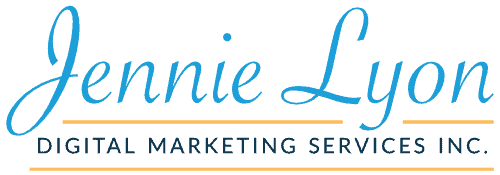7 Steps To A Successful Cold Outreach Email Sequence
Cold outreach can be an effective way to connect and market to your potential clients, partners, or influencers. However, it’s crucial to strike the right balance between being personable and avoiding a pushy sales approach. If you come off as spammy, your open rates will be terrible, and your response rates will be worse than that. In this article, we will discuss the essential steps that will help you craft successful cold emails that will tell a story in your authentic voice, capture your audiences’ attention and generate positive responses.
Today’s Overview
- Define and Segment Your Target Audience
- Craft a Compelling Subject Line
- Personalize and Tell a Story in Your Outreach Email
- Provide Value in Your Storytelling
- Value, Value, Value
- Include a Clear Call To Action (CTA)
- Follow Up Effectively
- FAQs
- This Week’s Action Plan
- Free Resources
Step 1: Define and Segment Your Target Audience
Before sending a single email or reaching out to anyone on social media, it’s essential to identify your target audience. Thus, understanding their needs, pain points, and preferences will help you tailor your message to resonate with them effectively. Conduct thorough research to gather insights into your audience’s industry, role, and interests. So, ask yourself, what makes my offer a great solution for the situation they are currently facing? What will make them consider making a decision? If you’re still struggling with who your target audience is, grab our ICA worksheet.
Once you nail down the answers to these questions, you’ll find writing your outreach sequence is easy and capturing your ideal audience’s attention is easier than you thought.
How to Get Started?
- Track Your Outreach
- Use our Free Cold Outreach Email Template to track your conversations. It has sections for your recipient’s name, company, industry, role, and any relevant information that you’ll need to address them in an authentic way!
- Segment Your Email List:
- Ensure that you are reaching out to people who are currently interested in what you have to offer.
- For example, if I’m offering a social media promotion, I want to make sure that everyone on my email list that has shown any type of interest in social media gets these outreach emails.
- Ensure that you are reaching out to people who are currently interested in what you have to offer.
- Utilize Social Media:
- Hop onto the social media network where you are positive your audience hangs out and start to collect information.
- For example, when I’m looking for clients, I’ll hop on LinkedIn and start to collect information about particular people who I know would be a good fit for my services.
- Hop onto the social media network where you are positive your audience hangs out and start to collect information.

Resource: How to Identify Your Core Lead Magnet – So, are you having trouble building your email list? The best way to get people to opt-in is by offering them free and valuable content! By creating a fantastic lead magnet that aligns with your core offer, you will not only be proving the quality of your products and services but also building a following that will help cement your future success!
Step 2: Craft A Compelling Subject Line
The subject line is the first thing recipients see, so it needs to grab their attention. Create a subject line that is concise, intriguing, and relevant to the recipient. Personalization and incorporating the recipient’s name or company can increase open rates. A compelling subject line can significantly impact the success of your cold email.
How to Get Started?
- Create a Killer Subject Line
- Use a subject line tester to see how successful your subject line will be in getting people to open the email.
- For example, here are two subject lines and how they’ll perform with my audience:
- Want to boost your SEO?
- Jennie, Do You Want To Be #1 On Google?🚀
- The second subject line performs twice as well as the first one!
- For example, here are two subject lines and how they’ll perform with my audience:
- Use a subject line tester to see how successful your subject line will be in getting people to open the email.
Step 3: Personalize and Tell a Story in Your Outreach Email
Personalization and storytelling are key to making your cold email stand out. You want to establish a connection with your recipient. So, address the recipient by their name and mention specific details related to their business or recent achievements. This shows that you’ve taken the time to do your homework and understand their needs will make your email more relevant and increase the chances of your recipient opening it and the chance of a positive response.
How to Get Started?
- Begin with a warm greeting using their name
- Show authentic interest in their business and work
- Tell a story in your email relating your message to their interests and pain points
Here are some examples to get you started:
Hi [Name], I was browsing on social media and came upon your podcast on [Topic]. As someone in [Industry], I found the information to help and was able to put your advice into action immediately. It made me think of [product/service] that we offer that would help you achieve [pain point].
Moreover, the idea is to make the message highly personalized and authentic. You want your ideal client to feel that connection and want to take the next step in the conversion.
Step 4: Provide Value in Your Storytelling
In the opening paragraph, demonstrate the value you can offer to the recipient in a way that makes your message memorable. So, think of real-life success stories that you’ve had with your current clients and use that as a jumping-off point to address a situation that your prospect is experiencing. Highlight how your product, service, or expertise can solve their problems or help them achieve their goals in a faster way. Be concise and focus on the benefits they will gain from engaging with you. Thus the key is don’t make your email too long. Keep it short and sweet and explain how your product or service provides the solution they’re looking for.
Step 5: Value, Value, Value
I can’t say it enough times; you have to provide value at every turn when it comes to nurturing your prospects. I don’t try to incorporate too much value in the first outreach email as I’m trying to establish a connection first. But once we have a connection, I want to provide value at every turn.
How to Get Started?
- Example: If during my research, I noticed someone who is my ICA has a terrible website. I would reach out to them with my first email. Then, once we’ve established a connection, my consequent emails would provide more value. So, that might be a copy of my Website Audit Workbook or my SEO Audit Workbook. The idea is to give them something of value that they can put into play today, see some actionable results, get excited, and want to work with you to really finish the project in the right way!
Step 6: Include a Clear Call-to-Action
Every cold email should have a clear and concise call-to-action (CTA) that guides the recipient on the next steps to take. Whether it’s scheduling a call, visiting your website, or requesting more information, make the CTA clear and easy to follow. Regardless, use action-oriented language and create a sense of urgency to encourage a prompt response.
How to Get Started?
Here are some examples of personalized CTAs that use open-ended questions to get people to respond.
- I’d love to hop on a call with you to have a 15-minute discussion about [product/service] and how we could help [recipient business name] with [pain point]. Are you free for a call early next week?
Step 7: Follow Up Effectively
Following up is crucial when sending cold emails. Craft polite and concise follow-up emails to remind recipients about your initial message. So, remember that these follow-up emails need to be short, and sweet, and offer value, value, value. A well-timed follow-up can significantly increase the response rate and lead to valuable opportunities.
Remember, it usually takes someone more than 10+ to see/hear you before they are ready to take action!
FAQs
Here are some common questions I get asked about
1: How many follow-up emails should I send?
The number of follow-up emails you should send depends on various factors, including the urgency of your message and the recipient’s responsiveness. It’s generally recommended to send a series of three to four follow-up emails spaced a few days apart. However, pay attention to any cues from the recipient, such as their interest or lack of response, to determine if further follow-up is appropriate.
2: How long should a cold email be?
Ideally, a cold email should be concise and to the point. So, aim for a length of around 150 to 200 words. Long-winded emails may overwhelm the recipient and decrease the chances of a response. Nonetheless, keep it brief, highlight the key points, and make it easy for the recipient to understand the purpose of your email.
3: Should I use a formal or informal tone?
The tone of your cold email depends on your target audience and industry. In most cases, a professional and friendly tone works best. Avoid using overly formal language that can create a sense of distance. Instead, strive for a conversational tone that feels approachable and engaging. Basically, adapt your tone based on the recipient’s company culture and the nature of your relationship.
4: How do I avoid sounding salesy in my emails?
To avoid sounding salesy in your cold emails, focus on providing value and building a genuine connection. Instead of bombarding the recipient with sales pitches, offer insights, solutions, or personalized recommendations. So be empathetic, show interest in their needs, and aim to establish a relationship built on trust and mutual benefit.
5: What are some examples of effective cold emails?
Effective cold emails vary depending on the context and target audience. However, here are a few examples:
- Introduction, Storytelling + Problem-Solution: Introduce yourself, address a specific pain point, and offer a solution tailored to the recipient’s needs.
- Social Proof: Mention successful case studies or testimonials that demonstrate the value you can provide.
- Mutual Connection: If you share a mutual contact or have a common interest, leverage that connection to establish rapport.
- Curiosity Spark: Craft a subject line and opening paragraph that pique the recipient’s curiosity and make them want to learn more.
This Week’s Action Plan
- Download our free cold outreach email tracking sheet
- Hop onto your favorite social media network and create a list of 10 prospects that you think would be perfect for your product/service
- Write your cold outreach email sequence using this content as your guide
- Send out your introduction email today
- Follow up with your prospect daily with your nurture sequence until you get a response or up to 10 emails (whichever happens first). Remember it takes 10+ times for a prospect to finally reply!
- Once you’ve gone through your first 10 prospects, start the process again.
Writing successful cold emails requires careful planning and a personalized approach. By following the seven steps outlined in this article, you can increase the effectiveness of your cold emails and improve your response rates.
Remember to always tell a story, provide value, be concise, and have a solid call to action. Cold emailing, when done right, can open doors and create valuable connections and opportunities if you stick with it!
Links for this episode:
Rate, Review, & Subscribe on Apple Podcasts
If you like what you hear on the podcast, please consider rating and reviewing my show! Woo Hoo! Click here, scroll to the bottom, tap to rate with five stars, and select “Write a Review.” I would love to hear what episodes you enjoy the most!
If you haven’t done so already, please subscribe to the podcast. I’ll be adding new content weekly. If you’re not subscribed, there’s a good chance you’ll miss out. Subscribe now!






















